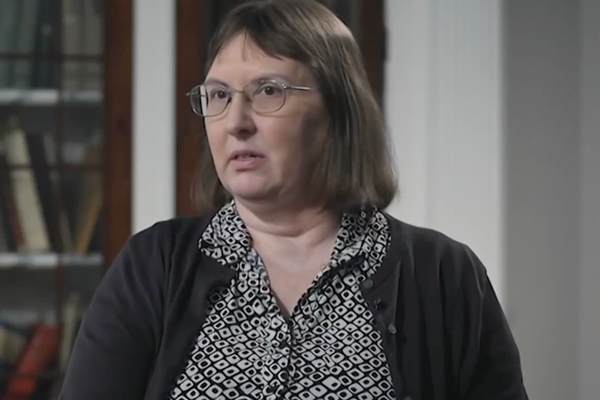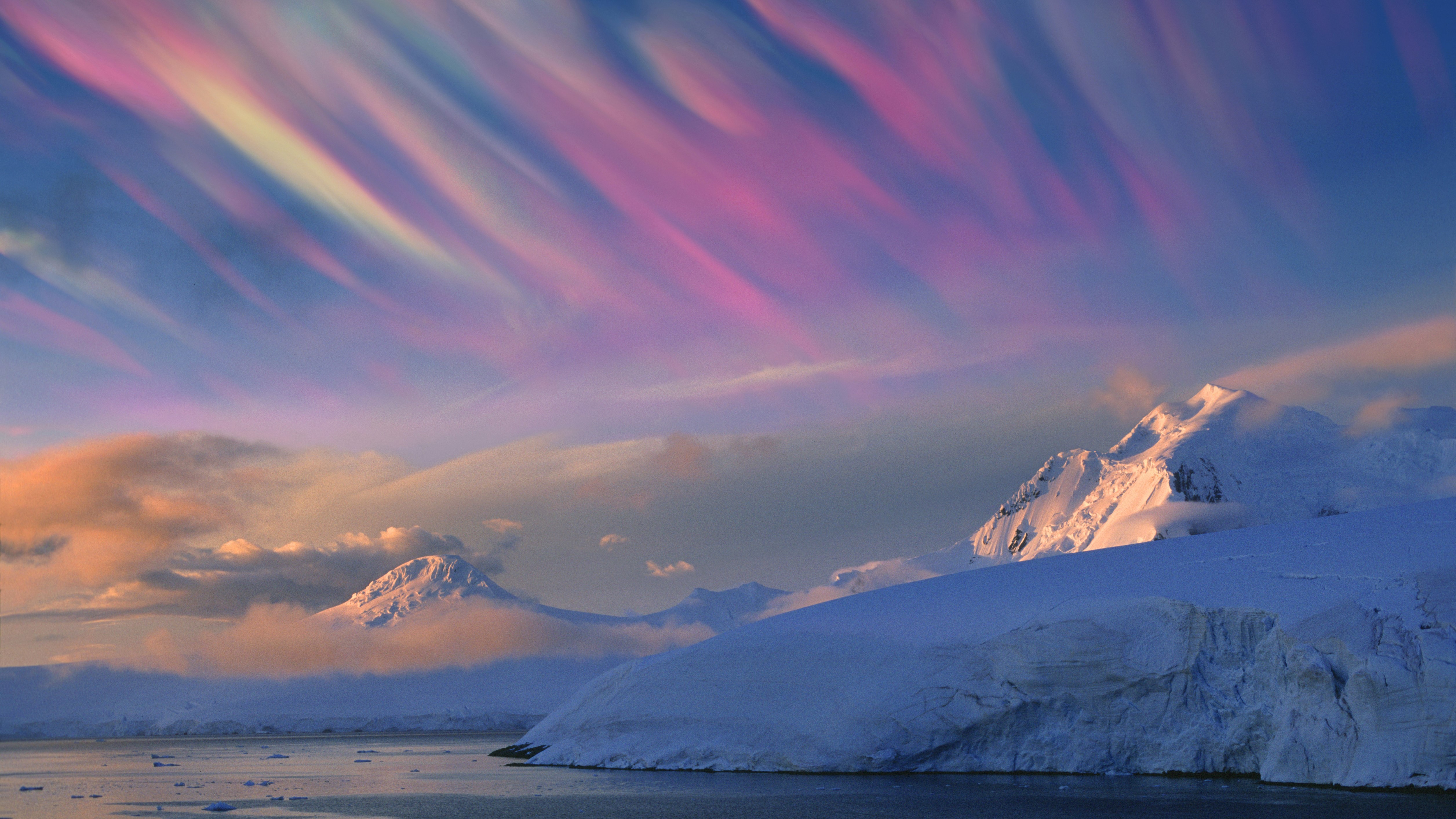
Nacreous clouds, or ice polar stratospheric clouds, are a rare type of cloud that forms in very cold conditions and at high altitudes.
They are known for their iridescent colors, which are created when sunlight interacts with the tiny ice crystals they are made of, according to the World Meteorological Organization (WMO). The name "nacreous" comes from "nacre," another name for mother-of-pearl, which refers to their iridescent appearance. They are sometimes called mother-of-pearl clouds.
Nacreous clouds are found during the winter in high-latitude areas, including the Arctic, Scotland, Scandinavia and Alaska. They sometimes form over other areas of Northern Europe but are the most common in Antarctica. Some nacreous clouds are wave clouds, which often form near mountain ranges.
Related: Spectacular 'rainbow clouds' light up northern skies in a rare skywatching treat (photos)
In some places, nacreous clouds are so brilliantly colorful and unusual that they are sometimes confused for the aurora borealis, or northern lights, which are colorful light displays caused by the interaction between electrically charged particles and Earth's atmosphere and are unrelated to nacreous clouds.
How do nacreous clouds form?
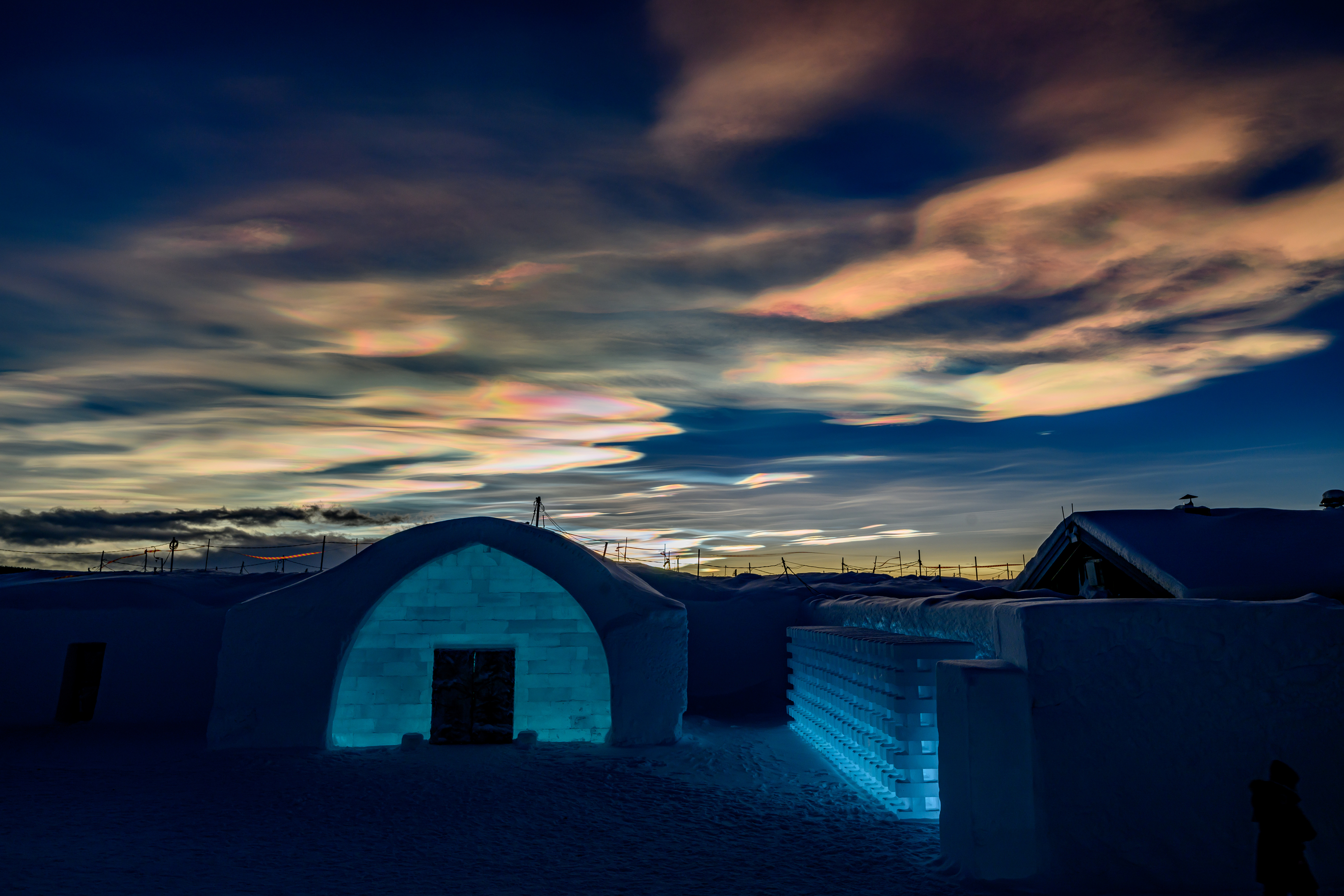
For nacreous clouds to form, the air must be colder than about minus 121 degrees Fahrenheit (minus 85 degrees Celsius), according to the WMO. Unlike most clouds, which form in the first layer of Earth's atmosphere, nacreous clouds form in the stratosphere, Earth's second atmospheric layer. Under these frigid conditions, all moisture in the air has been transformed into supercooled liquid and ice crystals, according to The Conversation. The spherical ice crystals that make up the clouds are only 10 micrometers in diameter — thinner than the typical width of a human hair, according to Thin Metal Parts.
Nacreous clouds are also called Type II polar stratospheric clouds (PSCs), which are clouds that form in the winter polar stratosphere. However, whereas nacreous clouds are composed only of ice crystals, another type, called Type I PSCs, can form in slightly warmer conditions and are made of mainly supercooled droplets of water, nitric acid and sulfuric acid, according to the Australian Antarctic Program. Type I PSCs have less spectacular colors, though they can form among areas of nacreous clouds.
Related: What are different types of clouds, and how do they form?
What causes the colors?
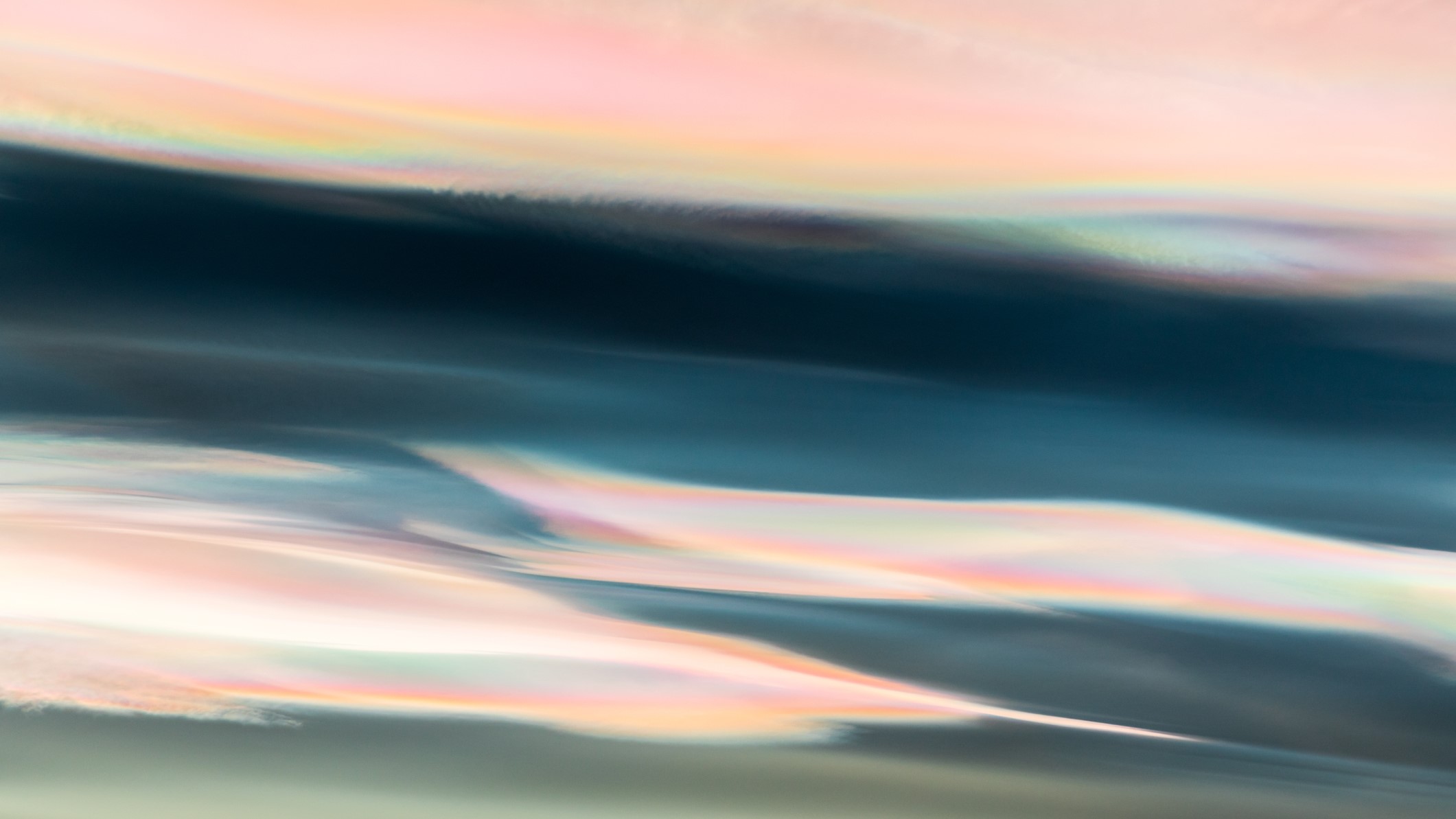
During the day, nacreous clouds are not colorful, and they look similar to cirrus clouds, a type of wispy, hair-like cloud that forms at high altitudes, according to the U.K. Met Office. But close to sunset, the clouds begin to take on their signature iridescent hues. The constantly changing colors are caused by a process called diffraction, according to Atmospheric Optics. As sunlight hits the tiny ice crystals that make up the clouds, it scatters in different directions, creating the appearance of many colors.
The best time to observe the clouds in their full glory is during "civil twilight," the time just before dawn or after sunset, when the sun is slightly below the horizon, according to The Conversation. Because of their high altitude and the curvature of our planet, the sunlight lights them up from below. At most high-latitude locations where these clouds form, they are at their most brilliant when the sun is between 1 and 6 degrees below the horizon, though they also glow orange and pink for a period when the sun is farther below the horizon, well before dawn and after sunset, according to the WMO.
Are nacreous clouds dangerous?
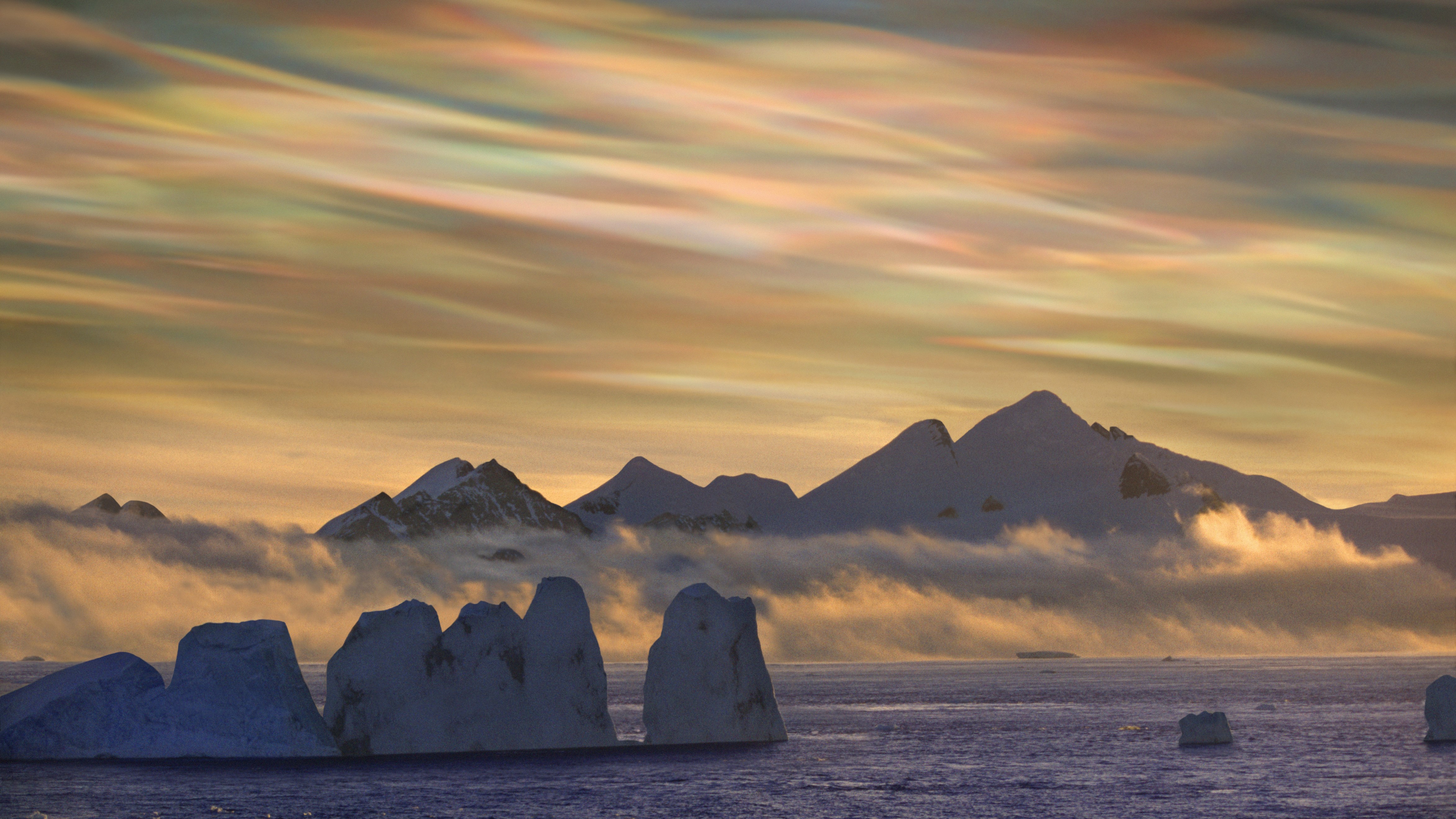
Though nacreous clouds aren't directly hazardous to humans, PSCs enhance the breakdown of Earth's ozone layer, a part of the atmosphere that protects us from the sun's ultraviolet radiation, according to The Conversation. However, some evidence suggests that Type I PSCs are more of a threat, according to Atmospheric Optics. Chemicals in the ice crystals, such as chlorine and bromine, react with ozone-destroying substances in the atmosphere, thus accelerating its destruction.
The destruction of the ozone layer is a less prominent issue than it was a few decades ago because of the Montreal Protocol, a multinational environmental agreement that began gradually phasing out the production of ozone-destroying chemicals starting in 1989. Still, researchers predict that the effects of these chemicals will affect the ozone layer for 50 to 100 more years, according to The Conversation.
Nacreous cloud FAQs
What is a nacreous cloud?
Nacreous clouds, also called Type II polar stratospheric clouds, are clouds that form at very high altitudes and extremely cold temperatures. They are made of tiny, spherical ice crystals that diffract sunlight before dawn and after sunset, causing a display of vibrant colors.
Why are nacreous clouds rare?
For these clouds to form, the stratosphere, the second layer of Earth's atmosphere, must be extremely cold — minus 121 F (minus 85 C), which is colder than the typical temperatures of the stratosphere. Therefore, nacreous clouds are usually found only in high-latitude areas in frigid winter conditions.
What is the difference between nacreous clouds and noctilucent clouds?
Whereas nacreous clouds form in the stratosphere, noctilucent clouds form in the mesosphere, the layer of Earth's atmosphere directly above the stratosphere. Because of this, noctilucent clouds shine during early evening, not shortly after sunset as nacreous clouds do, because they are higher and reflect sunlight when the sun is farther below the horizon.
Nacreous clouds expert Q&A
We spoke to Deepashree Dutta, a postdoctoral research associate about nacreous clouds and how they might affect polar warming.
Why do you think nacreous clouds might affect polar warming?
Nacreous clouds, or polar stratospheric clouds, form at very high altitudes (in the stratosphere) in the polar region during extremely cold winters. They absorb heat radiated by the Earth's surface and re-emit parts of this energy to the surface, similar to greenhouse gases. This process may warm the surface, indicating that these clouds could be important for polar warming.
How might nacreous clouds affect the warming of Earth at its poles?
Given that nacreous clouds form during winter, when there is limited sunlight in the polar regions, these clouds have the potential to warm polar regions even during winter through their greenhouse effect.
What impact might this effect have had in the distant past?
In 1992, paleoclimatologist Lisa Sloan [and colleagues] suggested that polar stratospheric clouds might have caused substantial high-latitude warming in the distant past. Building upon this idea, we used a climate model capable of simulating polar stratospheric clouds and found that under specific conditions, these clouds could trigger an additional surface warming of more than 7 C in high latitudes.
Could the same effect be relevant to polar warming and climate change today?
In the early Eocene, the continents and mountains were arranged differently than they are today. This played a key role in cooling the polar high altitudes due to changes in large-scale atmospheric waves, subsequently forming more polar stratospheric clouds. This implies that, if we were to reach levels of CH4 [methane] and CO2 comparable to the early Eocene in the future, we would expect a smaller increase in polar stratospheric clouds.
Additional resources
You can find out more about the potential relationship between nacreous clouds and climate models in the Polar Journal. Learn about how different types of clouds will help you predict the weather with Windy.App Read more about how polar stratospheric clouds play a role in ozone depletion with the British Antarctic Survey.
Bibliography
World Meteorological Organization. “Nacreous clouds,” International Cloud Atlas, 2017. https://cloudatlas.wmo.int/en/nacreous-clouds.html
Met Office. “Nacreous clouds.” https://www.metoffice.gov.uk/weather/learn-about/weather/types-of-weather/clouds/other-clouds/nacreous
Case, Nathan. “Explainer: what are the ‘nacreous clouds' lighting up the winter skies?” The Conversation, February 3, 2016. https://theconversation.com/explainer-what-are-the-nacreous-clouds-lighting-up-the-winter-skies-54095
Australian Government. “Polar Stratospheric Clouds,” Australian Antarctica Program, May 5, 2017. https://www.antarctica.gov.au/about-antarctica/ice-and-atmosphere/atmosphere/clouds-and-radiation/polar-stratospheric-clouds/
“Nacreous and Polar Stratospheric Clouds,” Atmospheric Optics, September 16, 2023. https://atoptics.co.uk/blog/nacreous-and-polar-stratospheric-clouds/
World Meteorological Organization. “Nitric acid and water polar stratospheric clouds,” International Cloud Atlas, 2017. https://cloudatlas.wmo.int/en/nitric-acid-and-water-polar-stratospheric-clouds.html
“About Montreal Protocol,” United National Environmental Programme. https://www.unep.org/ozonaction/who-we-are/about-montreal-protocol
Met Office. “Cirrus clouds.” https://www.metoffice.gov.uk/weather/learn-about/weather/types-of-weather/clouds/high-clouds/cirrus





